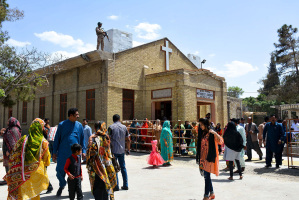Global Agency's AIDS Fund Falls Short - African Nations in Jeopardy?
As the world is assessing the global fight with HIV/AIDS today, global AIDS Day, experts say that tough financial times are a serious obstacle to efficient help for those struggling with the deadly virus.
The Global Fund to Fight AIDS, Tuberculosis and Malaria is a global organization fighting three of the world's most devastating diseases. It is reportedly the single largest donor body for HIV funding that provides more than 70 percent of funds for life-saving antiretroviral drugs in developing nations. The group provides HIV testing and counseling sessions to an estimated 190 million people.
But the organization admits that the global meltdown poses some serious risks to how much the fund can help.
"The world is at a critical point right now in the global AIDS response, with millions of people on treatment," professor Michel Kazatchkine, the fund's executive director said in a statement on Dec. 1. "But the enormous progress made in the last few years is at risk due to these difficult economic times, and still only one third of people living with HIV and in need of lifelong treatment are able to access it."
The organization joined the global goal for annual AIDS Day. The theme of this annual awareness day is to be – until 2015 – an effort to reach "Zero new HIV infections. Zero discrimination. Zero AIDS-related deaths."
Yet, money is indeed an issue.
A Dutch radio station reported recently that the Global Fund to Fight AIDS called off its next funding round after failing to secure the minimum $13 billion needed to fund its programs. The fund reportedly said earlier this month it was cutting new grants for countries battling the diseases.
"South African countries that rely heavily on Global Fund aid, including Swaziland, Malawi and Zimbabwe and Mozambique, are expected to see increasing fatalities and infections as a result of funding shortfalls," the station reported. "Stockpiles of life-saving antiretroviral (ARV) medication are also expected to drop."
Still, there were some victories in the long fight with this deadly disease, even as over 35 million people worldwide are currently living battling HIV or AIDS, according to recent data.
According to a 2010 global report from UNAIDS, five South African countries – South Africa, Botswana, United Republic of Tanzania, Zambia and Zimbabwe – showed a significant decline in HIV prevalence among young women or men.
Overall, the number of AIDS-related deaths among children fell by 19 percent between 2004 and 2009. The number of children being born with an HIV infection has decreased as well, as access to services that help preventing mother-to-child infection has improved globally, the report says.
But the numbers remain gruesome. For instance, an estimated 5.6 million people were living with HIV and AIDS in South Africa in 2009, more than in any other country, according to Avert.org. An estimated 310,000 South Africans died of AIDS that year.
Africans make up about two out of every three AIDS cases in the world, according to a recent Gallup poll.




























